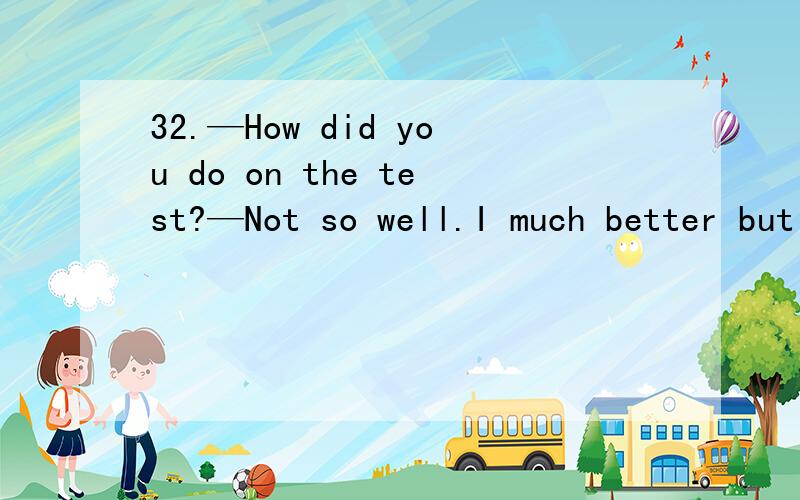32.—How did you do on the test?—Not so well.I much better but I misread the directions for Pa32.—How did you do on the test?—Not so well.I much better but I misread the directions for Part F.A.could do B.could have doneC.must have done D.shou
来源:学生作业帮助网 编辑:作业帮 时间:2024/07/20 10:08:48

32.—How did you do on the test?—Not so well.I much better but I misread the directions for Pa32.—How did you do on the test?—Not so well.I much better but I misread the directions for Part F.A.could do B.could have doneC.must have done D.shou
32.—How did you do on the test?—Not so well.I much better but I misread the directions for Pa
32.—How did you do on the test?
—Not so well.I much better but I misread the directions for Part F.
A.could do B.could have done
C.must have done D.should do
32.—How did you do on the test?—Not so well.I much better but I misread the directions for Pa32.—How did you do on the test?—Not so well.I much better but I misread the directions for Part F.A.could do B.could have doneC.must have done D.shou
解析:考查情态动词.从语境看,该句表示的是过去的情况,所以可以先排除A、D两项;再根据could表示对过去发生的事情推测“本来能够干某事而实际上能干”和must对过去发生的事情推测“一定干成了某事”可以确定B项正确.
答案:B
B.could have done
本可能,对过去的推测
b
选A,回答的意思是:不是很好,我本可以做得比较好的,只是我看错方向为F部了